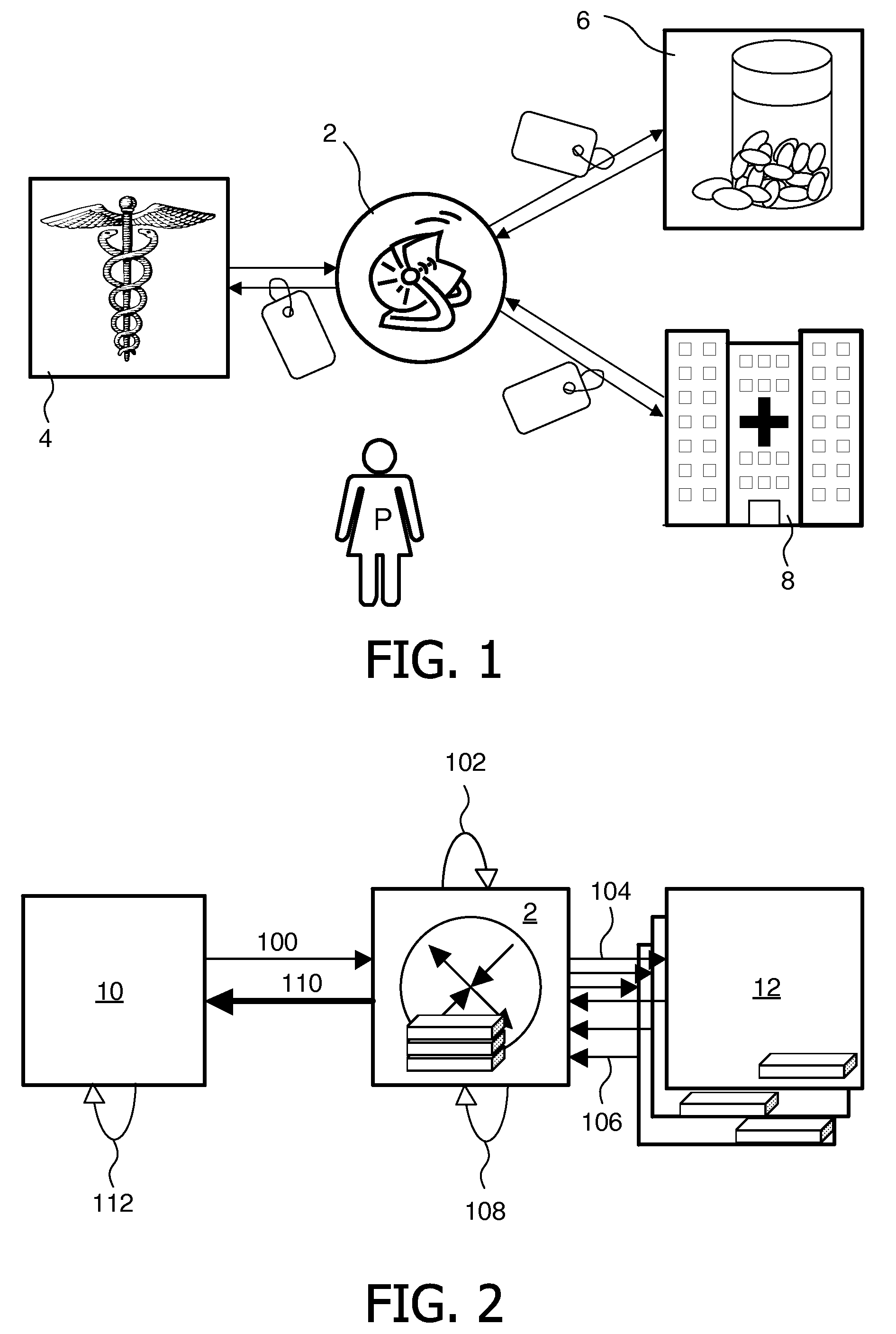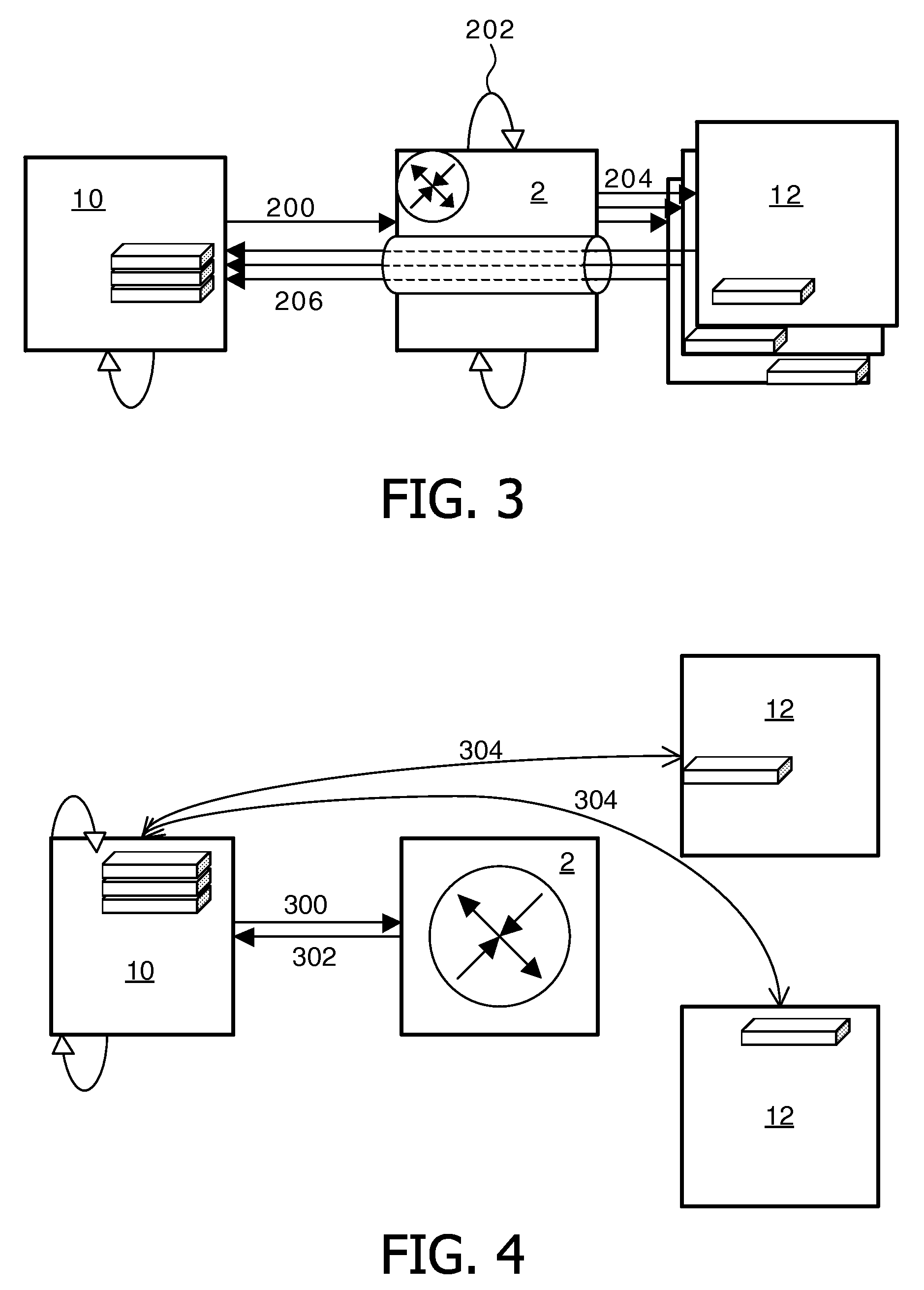Method for exchanging data
a data exchange and data technology, applied in the field of data exchange, can solve the problems of high processing load on the gateway, cumbersome application of clinical decision support tools and real-time analytical protocols across the distributed data environment, and heavy task, and achieve the effect of preserving privacy
- Summary
- Abstract
- Description
- Claims
- Application Information
AI Technical Summary
Benefits of technology
Problems solved by technology
Method used
Image
Examples
first embodiment
[0022]a method will now be described in detail with reference to FIG. 2. This embodiment will be described in conjunction with an electronic health record (EHR) system. However, it can be used in any server-gateway system where each server holds a unique federated identifier for the same single patient.
[0023]An EHR refers to one medical record of one individual person in digital format. EHR systems co-ordinate computer-aided storage and retrieval of individual EHRs. EHRs are made up of electronic medical records (EMRs) from many providers. A variety of types of healthcare-related information may be stored and accessed in this way.
[0024]When an end-user, who can be the general practitioner (GP), a dentist, a pharmaceutical chemist, or indeed the patient P e.g., requests certain data about patient P, the local EMR server composes a request comprising the local federated identifier of patient P. The request may additionally comprise a specification of the desired type of data wanted. A...
second embodiment
[0032]In the method, which is shown in FIG. 3, the creation of a first session pseudonym and the formatting of its corresponding inbound identifier arrays are executed already in the requesting server 10. The relayed request, indicated by arrow 200, comprises a reference to the session pseudonym rather than to the local federated identifier of patient P. The inbound identifier array is appended to the request.
[0033]The EHR system gateway 2 resolves the inbound identifier array, see arrow 202. Resolving involves extracting the patient identifier for the patient P on the requesting server from the inbound identifier array, looking up the corresponding patient identifier for the providing server, and associating the latter identifier with the session pseudonym, which is also extracted from the inbound identifier array. If there is more than one providing server 12, the gateway 2 creates one additional unique session pseudonym for each additional providing server 12. Prior to relaying, ...
third embodiment
[0037]In a third embodiment, which is shown in FIG. 4, the requesting server sends a request, see arrow 300, to the gateway 2, which resolves the inbound federated identities and for each providing server 12 creates one session pseudonym and encrypts the identifier for patient P in the providing server 12 so that it is only decryptable by its respective providing server 12. Thereafter the gateway 2 returns, see arrow 302, for each providing server 12, one intermediate response comprising the session pseudonym, the identifier for the requesting server 10 itself, the encrypted identifier for the patient P on the providing server 12 and the address, e.g. one uniform resource locator (URL), for each providing server 12.
[0038]Upon reception of an intermediate response, the requesting server 10 uses the address(es), e.g. URL(s), to resend, see arrows 304, the request out-of-band to each providing server 12, respectively. The request comprises the session pseudonym and the encrypted identi...
PUM
 Login to View More
Login to View More Abstract
Description
Claims
Application Information
 Login to View More
Login to View More - R&D
- Intellectual Property
- Life Sciences
- Materials
- Tech Scout
- Unparalleled Data Quality
- Higher Quality Content
- 60% Fewer Hallucinations
Browse by: Latest US Patents, China's latest patents, Technical Efficacy Thesaurus, Application Domain, Technology Topic, Popular Technical Reports.
© 2025 PatSnap. All rights reserved.Legal|Privacy policy|Modern Slavery Act Transparency Statement|Sitemap|About US| Contact US: help@patsnap.com



